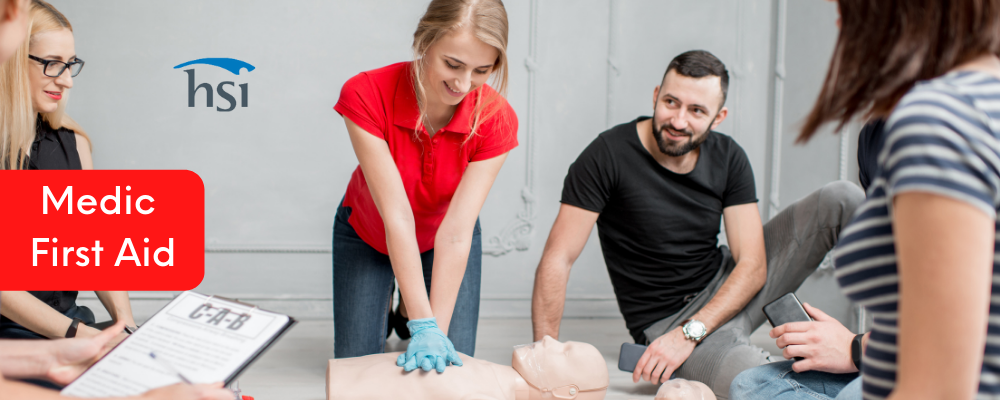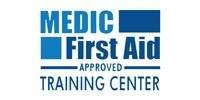First aid course are part of the employer induction program – First aid is the initial assistance or treatment given to someone who is injured or suddenly becomes ill before professional medical help arrives.
First Aid Course
By POSHE
Categories: Medic First

About Course
0(0 Ratings)
First Aid Course

First Aid course - Save victim

What I will learn?
- A basic first aid course is designed to teach individuals how to respond effectively to common injuries, accidents, and medical emergencies. It equips participants with the knowledge and skills needed to provide immediate care and potentially save lives.
Student Ratings & Reviews

No Review Yet
₹12,000.00
₹15,000.00
Enrollment validity:
Lifetime
-
LevelBeginner
-
Duration24 hours
-
Last UpdatedNovember 21, 2024
-
CertificateCertificate of completion
Hi, Welcome back!
A course by
P
Material Includes
- Medic first aid handbook
Requirements
- Practical demonstration mandatory
Tags
Target Audience
- Anyone with first aid responsibility at workplace
Medic First aid course
The acquisition of first aid training is a highly important and indispensable skill that confers a multitude of benefits to people, communities, and society at large. The advantages of first aid training encompass a wide range of significant outcomes, spanning from urgent life-saving measures to the cultivation of safety consciousness. The following are few significant benefits associated with first aid training:
The acquisition of life-saving skills is a notable benefit associated with the completion of first aid training. Prompt and suitable responses in emergency situations have the potential to mitigate the exacerbation of injuries and offer vital assistance until the arrival of trained medical personnel.
The use of timely and appropriate first aid measures can effectively mitigate the likelihood of complications and mitigate the severity of injuries or medical issues. The prompt and appropriate implementation of interventions can have a substantial impact on the progression of the recovery process.
Enhanced Self-Assurance: The acquisition of first aid training empowers individuals by providing them with the necessary knowledge and abilities to effectively manage emergency situations. This acquisition of information enhances self-assurance and enables individuals to assume command in crucial circumstances.
Prompt Reaction: The acquisition of first aid training enables individuals to swiftly evaluate circumstances and react in a suitable manner. Timely response plays a pivotal role in scenarios where time is of the essence, such as instances of cardiac arrests or profuse haemorrhaging.
Medic First Aid Training
The promotion of safety and prevention of accidents are commonly addressed in first aid training programmes, hence fostering an increased awareness of safety. The heightened level of consciousness can result in the adoption of more secure behaviours and the establishment of safer surroundings, hence diminishing the probability of emergencies occurring initially.
The enhancement of community resilience is observed when a greater number of individuals within a community acquire training in first aid. During a disaster or large-scale emergency, there exists a greater number of persons who possess the capacity to render aid until the arrival of professional assistance.
First aid at work
Workplace Safety: Numerous organisations mandate that staff possess fundamental first aid training. This measure enhances workplace safety and guarantees that personnel are equipped to effectively handle workplace emergencies.
Reduced Response Time: Individuals who have received training are able to promptly administer first aid procedures, perhaps resulting in a decrease in the duration required for professional medical assistance to arrive at the location.
Effective Resource Utilisation: First aid course instructs individuals on the efficient utilisation of available resources. The significance of this is particularly pronounced in circumstances where there may be a delay in accessing medical assistance.
The significance of demonstrating empathy and compassion is underscored throughout first aid training, particularly in relation to providing care for individuals in emergency situations. This promotes the development of empathy and compassion, thereby cultivating a community that is characterised by increased levels of care and support.
The potential for cost savings: Appropriate administration of first aid has the capacity to mitigate the need for hospitalisations, surgeries, and other expensive medical procedures. This phenomenon can lead to financial benefits for both people and healthcare systems.
The enhancement of public health is facilitated by a populace that is adequately taught, since it serves to alleviate the strain on healthcare institutions and practitioners. This facilitates the more efficient allocation of medical resources.
Teambuilding: Within professional environments and communal contexts, the provision of first aid course training has the potential to cultivate a collective spirit of cooperation and collaboration. The establishment of trust and camaraderie is facilitated by the awareness that one can rely on others for support in times of disaster.
The acquisition of first aid training encompasses more than just assisting others in need. It also equips individuals with the necessary skills to effectively respond to emergencies that may impact themselves or their close relations. The state of being prepared is of immense value.
Communities characterised by a greater frequency of individuals equipped with first aid training are inclined to encounter favourable consequences in the face of emergency situations, hence yielding good social impact. This has the potential to enhance social cohesion and cultivate a collective ethos of accountability and support.
In summary, the acquisition of first aid training confers a multitude of benefits upon both individuals and society. First aid training has a significant role in enhancing individuals’ preparedness to effectively address emergency situations, hence resulting in the preservation of human lives, mitigation of injury severity, and the cultivation of safety consciousness. The aforementioned phenomenon facilitates the empowerment of individuals, cultivates their ability to adapt and recover from adversity, and nurtures a collective sentiment of empathy and accountability within the broader societal context.
Medic First Aid Training - Topics covered
Techniques for performing CPR on adults, children, and infants, including chest compressions and rescue breaths.
How to help someone who is choking and unable to breathe.
Methods for controlling bleeding, cleaning wounds, and applying bandages.
How to assess and treat burns of varying degrees.
Techniques for immobilizing and stabilizing injured limbs
How to assist someone having seizure and ensure their safety.
Recognition and initial treatment of allergic reactions, including how to use an epinephrine auto-injector.
How to recognize and manage shock, which can result from various medical emergencies.
Managing heatstroke, heat exhaustion, hypothermia, and frostbite.
Basic understanding of conditions like heart attacks, strokes, and diabetic emergencies.
Tips for preventing accidents and promoting safety at home, in the workplace, and in public places.
Knowing when to call emergency services and how to provide relevant information
Communities with a higher prevalence of first aid-trained individuals are more likely to experience positive outcomes during emergencies. This can strengthen community bonds and foster a culture of responsibility and assistance.
First Aid training enhances your skills to promote speedy recovery.
What Will You Learn?
- A basic first aid course is designed to teach individuals how to respond effectively to common injuries, accidents, and medical emergencies. It equips participants with the knowledge and skills needed to provide immediate care and potentially save lives.
Student Ratings & Reviews

No Review Yet


